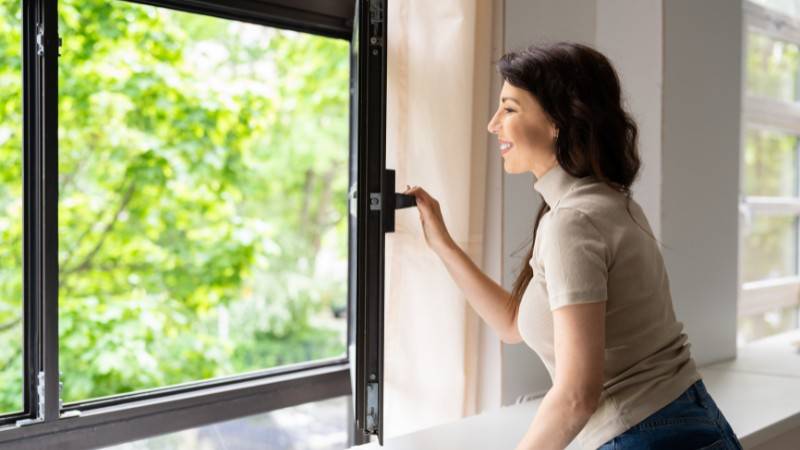One lazy Sunday afternoon, I was sitting in my living room when I noticed something interesting. A ray of sunlight shining through the window showed countless tiny dust particles dancing in the air. It was a mesmerizing spectacle, yet it sparked a realization about something we often overlook—the air quality in our own homes.
We can’t see it, but sometimes, the air quality inside isn’t as clean as it should be.
Lately, people have started talking more about the air quality inside our homes. We know it’s important to have clean air outside, but it’s just as important to have clean air inside where we live, play, and sleep.
Many of us care a lot about taking care of our planet, so we look for natural ways to make the air in our homes cleaner. We don’t always need machines or gadgets to do this. Nature has given us everything we need to make our air fresh and clean.
In this blog, we’re going to talk about some easy and natural ways to clean the air in your home. I’ve tried many of these ideas myself, and I’ll share them with you.
What Makes the Air Dirty?
Have you ever wondered why sometimes you sneeze a lot or your eyes get itchy for no reason? Well, the air in our homes can get dirty, and we might not even know it! Our houses can have tiny invisible things floating around that aren’t good for us to breathe.
First, there’s something called VOCs, which stands for Volatile Organic Compounds. That’s a fancy way of saying chemicals that can come from paints, cleaning sprays, or even the glue in our furniture.
Then, we have dust mites and pet dander. Dust mites are teeny tiny bugs that live in our beds and carpets. They’re so small you can’t see them, but they’re there!
And pet dander? That’s just a nice way of saying tiny flakes of skin from our furry friends, like dogs and cats.
One time, after cleaning my room with a strong spray, I started sneezing like crazy. That’s when I learned about these invisible air invaders. It’s a bit scary to think about, but don’t worry! Knowing about them is the first step to making our air cleaner and our homes healthier.
Also, ensuring cleaner indoor air should be a priority in your green cleaning routine.
What Are The Symptoms of Poor Indoor Air Quality?
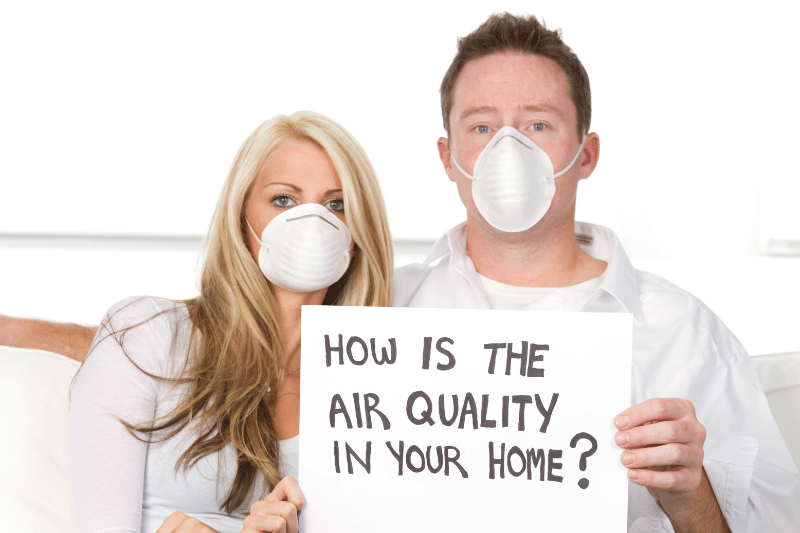
Have you ever felt super tired, even if you slept a lot? Or maybe you’ve had headaches or kept sneezing without having a cold? These can be signs that the air in your house isn’t as clean as it could be.
Poor air inside our homes can make us feel not so great. Some signs include feeling really tired all the time, getting headaches more often than usual, or even having allergies act up when you’re indoors. This means your nose might get stuffy, or your eyes could start itching when you’re just hanging out at home.
I remember a friend telling me a story. She was always feeling sleepy and didn’t know why. Then, she found out her room had poor air quality because of an old carpet that was full of dust mites! After she got rid of it and brought in some plants, she started feeling much better. It was like a light bulb went off when she realized the air in her room was making her feel tired.
It’s kind of like when you wear a backpack that’s too heavy. At first, you might not notice it, but after a while, your shoulders start to hurt. Bad air in our homes can be like that backpack – we don’t see it, but it’s there, making us feel tired and yucky.
But the good news is, once we know what to look out for, we can take steps to make the air better and feel healthier again!
The Power of Plants in Air Purification
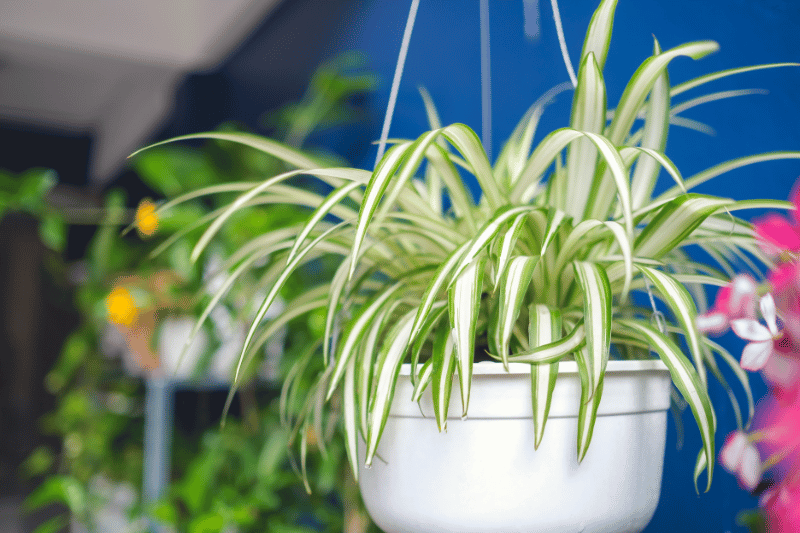
Did you know that plants can be like little superheroes for the air in our homes? It’s true! Besides making our rooms look nice and green, some plants have special powers to clean the air. Let’s talk about which plants are the best at this and how they do it.
First off, plants like the spider plant (Chlorophytum comosum) and the peace lily (Spathiphyllum) are amazing at sucking up bad stuff from the air. Imagine them as little vacuum cleaners, but instead of noise, they just quietly do their job, making our air fresher.
My friend Sarah put a peace lily in her home office, and she noticed she felt more awake and had fewer headaches. It was like the plant was not just a decoration but a helpful friend.
Now, you might wonder, can plants really get rid of bad smells too?
Yes, they can! It’s kind of like plants breathing in the yucky air and breathing out nice, clean air. Imagine if you could eat junk food and turn it into healthy food every time you breathed out. That’s sort of what these plants do with the air!
So, whether it’s getting rid of odors or cleaning out pollutants, adding a few green buddies to your space can make a big difference. Next time you’re feeling a bit stuffy at home, remember, a new leafy friend might just be the solution you need.
Regular Vacuuming and Indoor Air Quality
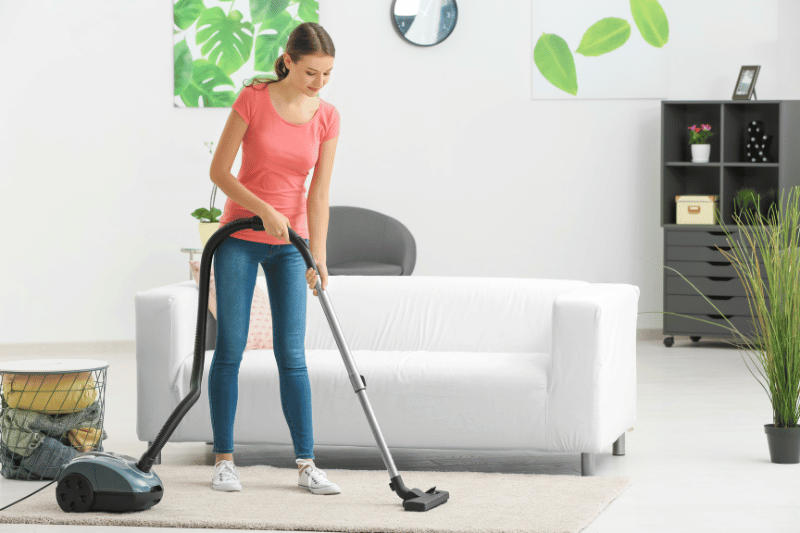
One of the easiest ways to keep the air clean in your home is something we often do already. Yep, I’m talking about vacuuming! It’s not just about keeping the floors clean; it also plays a big role in making sure the air we breathe is nice and fresh.
Vacuuming regularly picks up all those tiny bits we bring in on our shoes and pets, like dirt, pollen, and even tiny bugs we can’t see. These can make the air in our homes not so great to breathe, especially for friends who might have allergies.
So, how often should we be vacuuming?
Experts say giving your house a good vacuum once a week is a great start. But, if you have pets or a busy home with lots of people coming and going, you might want to do it a bit more often, like two or three times a week.
The Role of Natural Air Purifiers
Nature gives us some pretty amazing tools to keep our homes fresh and clean, without needing to plug anything in! Let’s dive into how some natural air purifiers can make a big difference in our living spaces.
Does Charcoal Clean the Air?
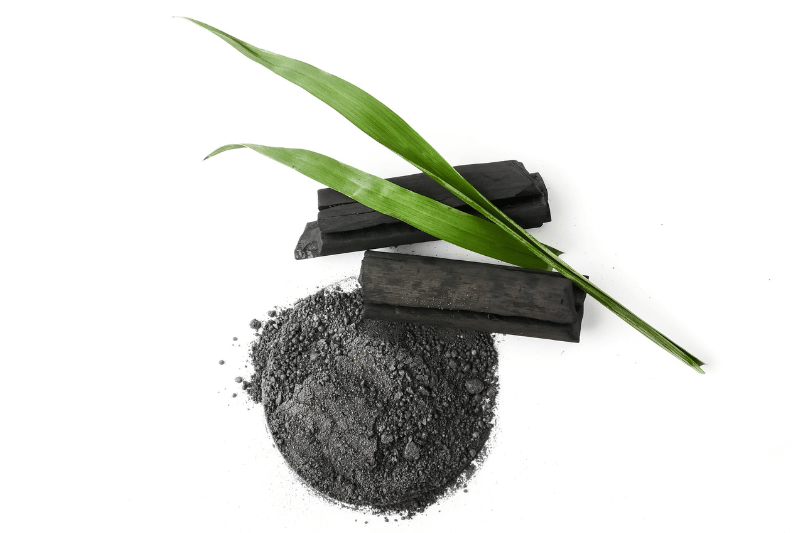
You might have heard about activated charcoal—no, not the kind for your BBQ, but a special kind that’s really good at grabbing onto things we don’t want in the air. Activated charcoal, a form of carbon processed to have small, low-volume pores, is a champion at trapping unwanted particles.
Its porous nature makes it excellent for absorbing odors and pollutants. An interesting fact: activated charcoal is so effective that it’s used in water filters and to treat poisoning. Charcoal is one of the best natural odor eliminators that you can have in your home.
I once put a charcoal bag in my musty old closet, and it surprisingly got rid of that old shoe smell!
The Truth About Salt Lamps: A Good Placebo?

Salt lamps, with their warm, inviting glow, are said to purify the air through hygroscopy. Meaning, they work by attracting and absorbing water molecules from the air, along with any attached impurities.
Though scientific evidence supporting these claims is limited, many users report feeling calmer and breathing easier with a salt lamp in the room.
I bought one for my study, and whether it’s the placebo effect or not, the air feels fresher, and I feel more relaxed.
Essential Oils for Cleaner Air
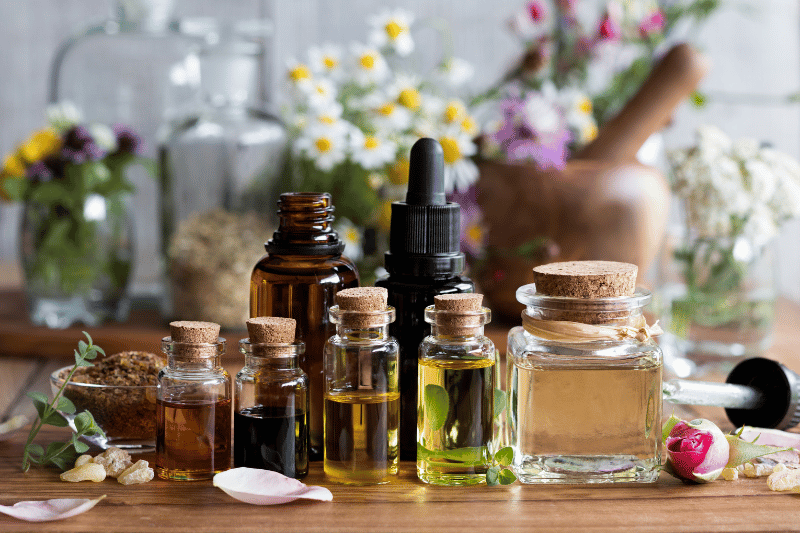
Essential oils are not just for their pleasant aroma; they can also help purify the air. Tea tree and lavender oils, known for their antimicrobial properties, can help reduce airborne bacteria when used in a diffuser.
A study even showed that diffusing tea tree oil could decrease mold counts in the air.
I love diffusing a blend of eucalyptus and lemon for a clean, invigorating home environment.
The Benefits of Letting Fresh Air In

Sometimes, the simplest solutions are the best.
Opening windows to let fresh air in can greatly improve the quality of air in our homes. It sweeps away stale air and brings in new, clean air. I make it a point to open windows every morning; it’s like giving my house a breath of fresh air.
Using natural air purifiers like these can be a simple and effective way to make our homes healthier and more pleasant to live in. Plus, they connect us a bit more to the natural world, right in our own living spaces.
Are Air Purifiers a Good Investment?

When considering an air purifier, two questions often come up: “Do they really remove dust?” and “Are they worth the cost?” The answer to the first is a resounding yes.
According to the University of Massachusetts Amherst, air purifiers equipped with HEPA filters can capture up to 99.97% of particles as small as 0.3 microns, which includes dust, pollen, smoke, and even some bacteria.
As for their worth, it depends on your needs. For families with allergies, asthma, or pets, the investment can significantly improve the quality of life by removing allergens and odors from the air.
A friend of mine noticed a dramatic decrease in her son’s allergy symptoms after they started using an air purifier in their home, making it a worthwhile investment for them.
How Often Should You Purify Your Air?
Maintaining optimal indoor air quality is an ongoing effort. Ideally, an air purifier should run continuously to effectively remove pollutants as they enter your home.
However, running it for at least 12 hours a day can strike a balance between air quality and energy use. Remember, effectiveness also depends on regularly replacing or cleaning the filters according to the manufacturer’s recommendations.
How Long Does It Take to Purify a Room?
Setting realistic expectations is key. The time it takes to purify a room can vary depending on the purifier’s size, the room’s size, and the level of pollutants.
Generally, it can take a few hours to significantly improve the air quality in a medium-sized room. Some purifiers have air quality indicators, offering a tangible way to see improvements in real-time.
During a wildfire season, my neighborhood was enveloped in smoke. Using an air purifier, it was fascinating to watch the indicator change from red to green within a couple of hours, visibly improving the room’s air quality and making the air feel lighter and cleaner to breathe.
8 Practical Tips to Maintain Clean Air at Home

Keeping the air in our homes clean might seem like a big task, but it’s really about the little things we do every day. Here are some simple, effective tips to help you breathe easier at home.
1. Let in the Fresh Air
Opening your windows is more than just a way to cool down your home—it’s a vital step in purifying your indoor air. Make it a routine to open windows early in the morning or late in the evening when traffic is lighter, and the air outside is fresher. This practice not only reduces CO2 levels but also helps eliminate indoor pollutants that accumulate over time. Consider creating a cross breeze by opening windows on opposite sides of your home to maximize airflow.
2. Leave Shoes at the Door
Shoes can bring in all sorts of pollutants from outside, including pollen, pesticides, and even bacteria. Create a dedicated space near your entrance for shoes, and encourage family and guests alike to make use of it. This simple habit can significantly reduce the amount of outdoor pollutants entering your living space, making your home cleaner and safer.
3. Groom Your Pets Regularly
Pets are wonderful companions, but their fur and dander can compromise indoor air quality. Regular grooming reduces the amount of hair and dander in your home. Additionally, investing in a good quality vacuum cleaner designed to pick up pet hair can help keep your floors and air cleaner. Consider establishing a grooming schedule and stick to it to minimize pet-related air pollutants.
4. Use Your AC Wisely
Your air conditioning system does more than cool your home; it circulates and filters the air. To ensure it functions efficiently, replace or clean the AC filters every 1-3 months, especially during high usage periods. A clean filter not only improves air quality but also enhances the efficiency of your AC, saving you money on energy bills.
5. Fight Mold Proactively
Mold thrives in moist environments and can significantly affect your indoor air quality. Use exhaust fans in bathrooms and kitchens to reduce humidity levels. Fix leaks promptly and consider using a dehumidifier in particularly damp areas of your home. Regularly cleaning and drying damp areas can prevent mold growth and protect your home’s air quality.
6. Air Out New Furniture
Many new furniture pieces contain chemicals that can off-gas into your home. If possible, let new items off-gas outside or in a well-ventilated area before bringing them indoors. This can significantly reduce the introduction of VOCs into your home environment. Additionally, look for furniture made with natural materials, which are less likely to off-gas harmful chemicals.
7. Choose the Right Cooking Oils
Cooking at high temperatures can release smoke and pollutants into your home’s air. Use cooking oils with high smoke points, like avocado, canola, or peanut oil, to minimize this risk. Additionally, always use an exhaust fan or open a window when cooking to help ventilate smoke and odors.
8. Light Up Beeswax Candles
Beeswax candles are a natural air purifier, unlike paraffin candles, which can release harmful chemicals. Beeswax burns cleanly and emits negative ions that can help neutralize pollutants in the air. These candles not only improve air quality but also provide a warm, natural light that enhances the ambiance of your home.
Clean Indoor Air = Healthier Life
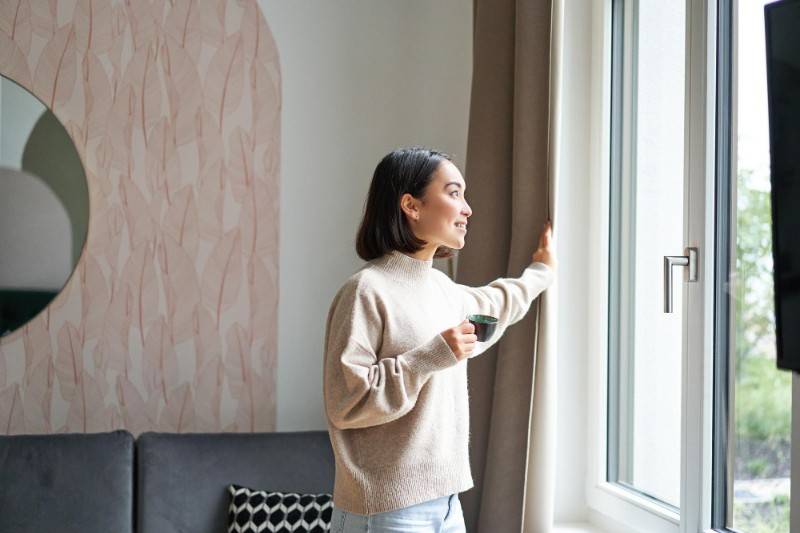
We’ve explored many ways to make the air in our homes cleaner and healthier. Remember, every small step counts when it comes to purifying the air we breathe. From opening windows to choosing the right cooking oils, these simple changes can make a big difference.
I encourage you to try these tips and see for yourself how a breath of fresh air can change your home. Let’s remind ourselves: “Clean air at home is not just a luxury; it’s a necessity for a healthy life.”
Start today, and breathe easier tomorrow.

